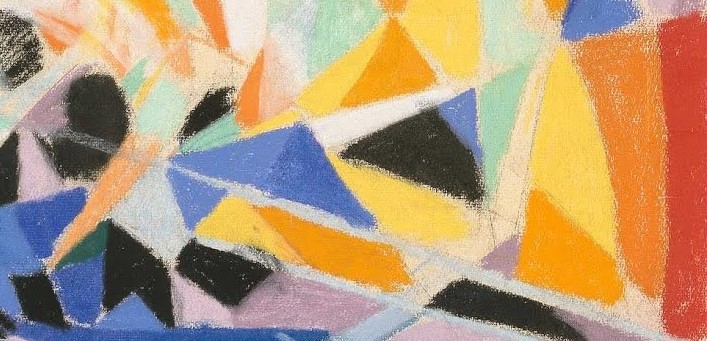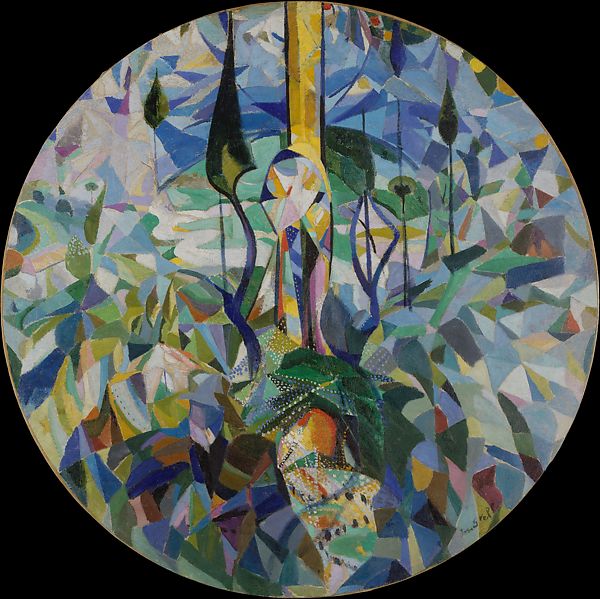Joseph Stella created the Futurist Composition, in pastel over graphite on paper, in 1914. This painting is part of the collection of the Amon Carter Museum of American Art in Fort Worth.

What is Depicted in the Futurist Composition?
The Futurist Composition in an abstract language represents the experience of dynamism of an authentically American urban space – Coney Island through the prism of a dazzling array of lights.
Futurist Composition – Analysis
Joseph Stella’s visits to Italy and Paris between 1909-1912 were very decisive for his further artistic development. His acquaintance with the Futurists in Paris is especially important. It was in Paris that the Futurists had their first exhibition outside of Italy, at the Bernheim-Jeune gallery in 1912. The exhibition presented the works of Carlo Carrà, Luigi Russolo, Giacomo Balla, Umberto Boccioni, and Gino Severini. Among the Futurists, Severini’s choice of themes as well as his palette and approach to color influenced Stella the most. A negative attitude towards the past was an essential part of the philosophy of futurism. Futurists considered it necessary to break with tradition in the wider cultural and political domain. They despised the conservatism of institutions and advocated both an artistic and a political revolution. The overtly aggressive tendencies that the Futurists represented in their numerous publications were not part of what Stella brought to the American art scene. Considering that American society was significantly less burdened by history compared to the Italian, the anger that the Futurists wanted to articulate through the violent struggle in Italy finds no basis in the American case. The United States was a society that glorified industrialization, a technological revolution, a society that became increasingly open to modern art after the Armory Show in 1913.

Stella’s Futurist Composition includes two important references to post-impressionism that the Futurists emphasized. It refers to the relation between the phenomenon of light and the technique of divisionism. Coney Island was one of the symbols of New York’s modernity. The vibrant and colorful entertainment space was the inspiration for Stella’s light refraction study. The dynamism and machinery of Coney Island are reduced to a divisionist image of the play of light. This work, executed in the pastel technique, is not a preparatory sketch for a painting. During his career, Stella often exhibited pastels alongside his paintings. The composition is dominated by triangular forms as sharply defined colored fields. In addition to them, the composition also includes slightly rounded forms as well as rectangular and irregular shapes. Warm colors, orange, and yellow predominate in the upper part of the painting, while cold blue and violet predominate in the lower part. The contrast ratio of colors is completed by rare but expressive fields of red and green, while black fields are noticeable in the central and lower segments of the composition. This fragmented scene like a kaleidoscope successfully synthesized the phenomena of speed, industry, entertainment, and vitality of modern American life.


Related Artworks
Coney Island was the subject of many of Stella’s works, including Battle of Lights, Coney Island, Mardi Gras (1913–14), and Coney Island (1914).
